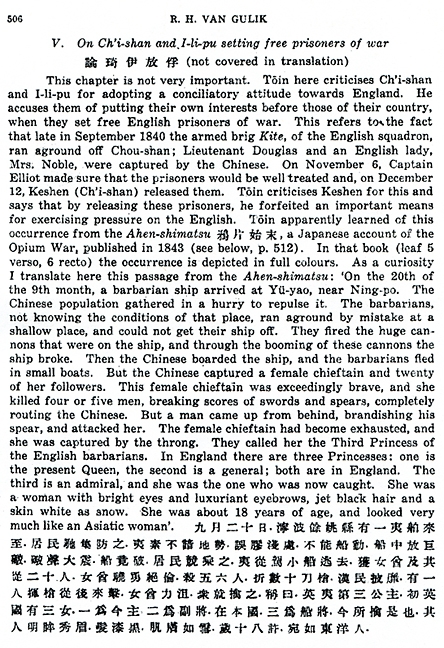ANNE NOBLE AS A WOMAN WARRIOR
Japanese accounts of the Opium War based on Chinese sources quickly turned the brief captivity of the British captain’s wife Anne Noble in 1840 into a war story of epic dimensions. Within three years of the episode, the samurai scholar Saitō Chikudō wrote about it in a poem and, in almost identical language, retold the story in a book titled Ahen Shimatsu (Opium Beginning to End), published in 1843. The translation and summary account reproduced here—including the original Japanese—appears in an article by the Dutch scholar R. H. van Gulick titled “Kakkaron: A Japanese Echo of the Opium War,” published in the scholarly journal Monumenta Serica in 1939.
